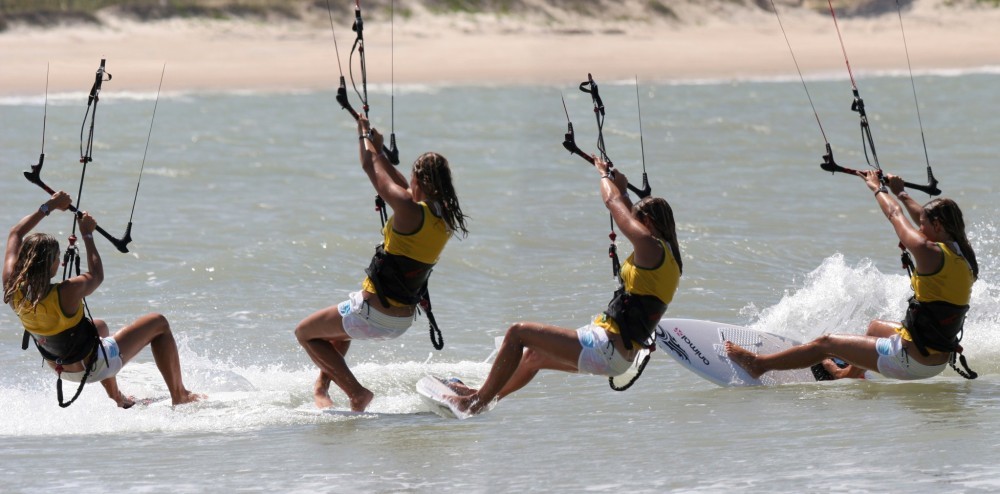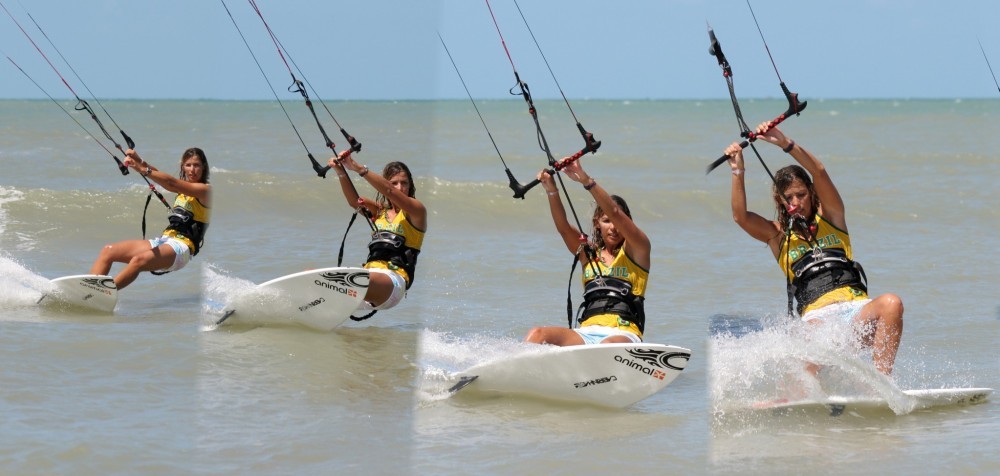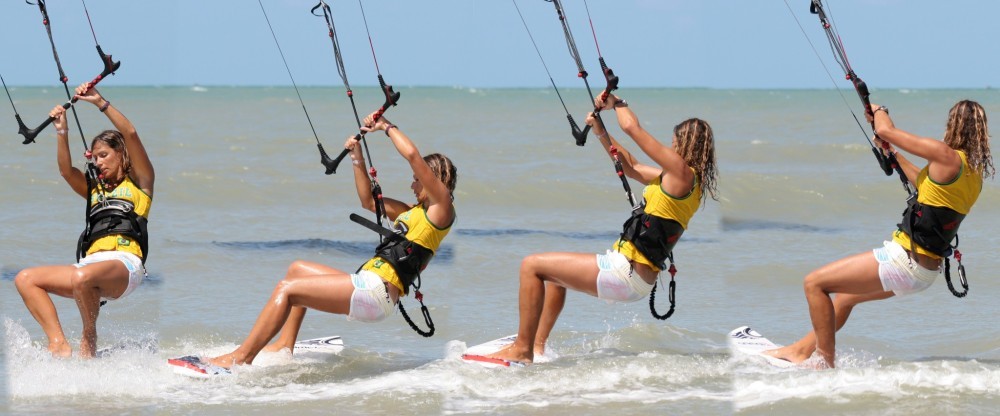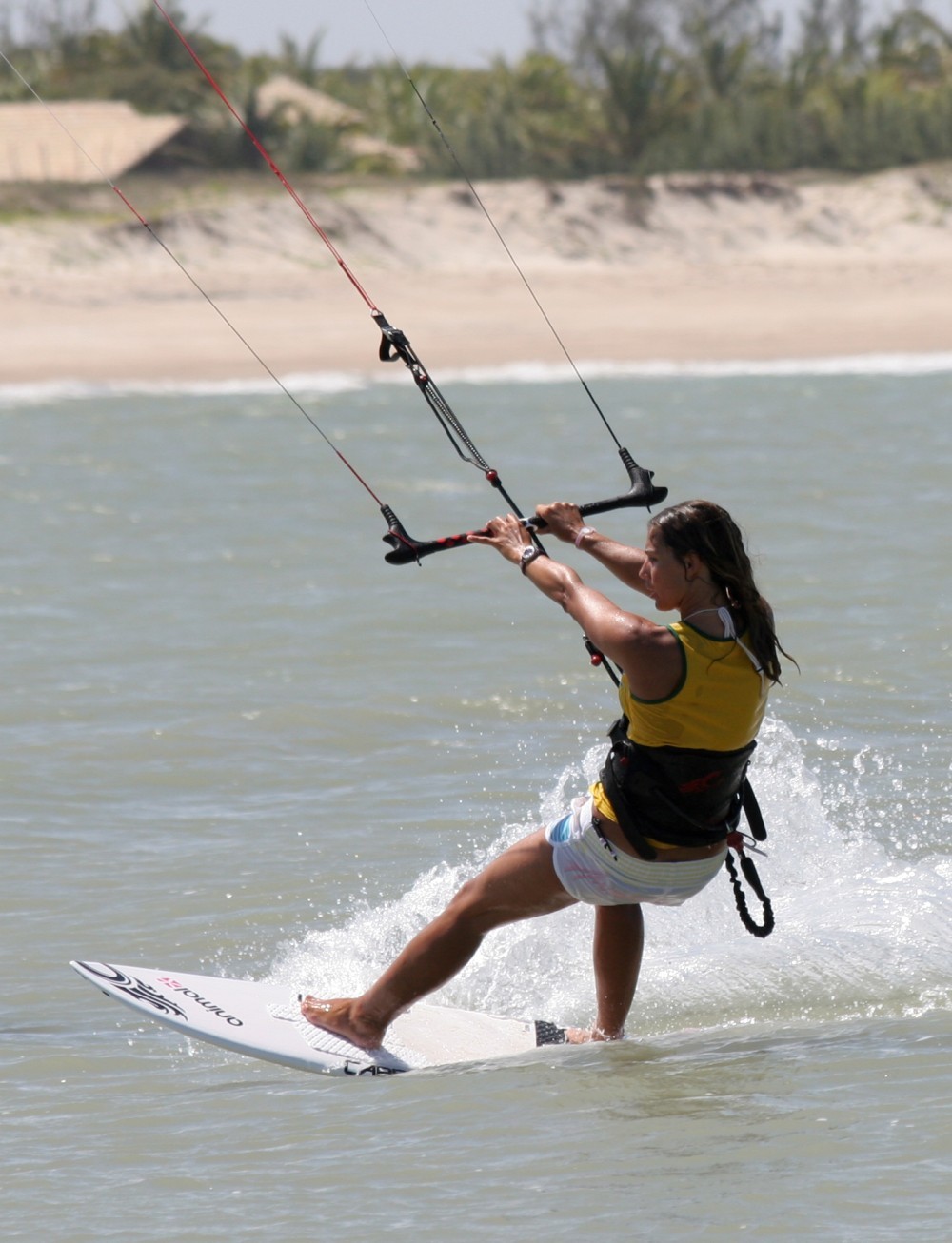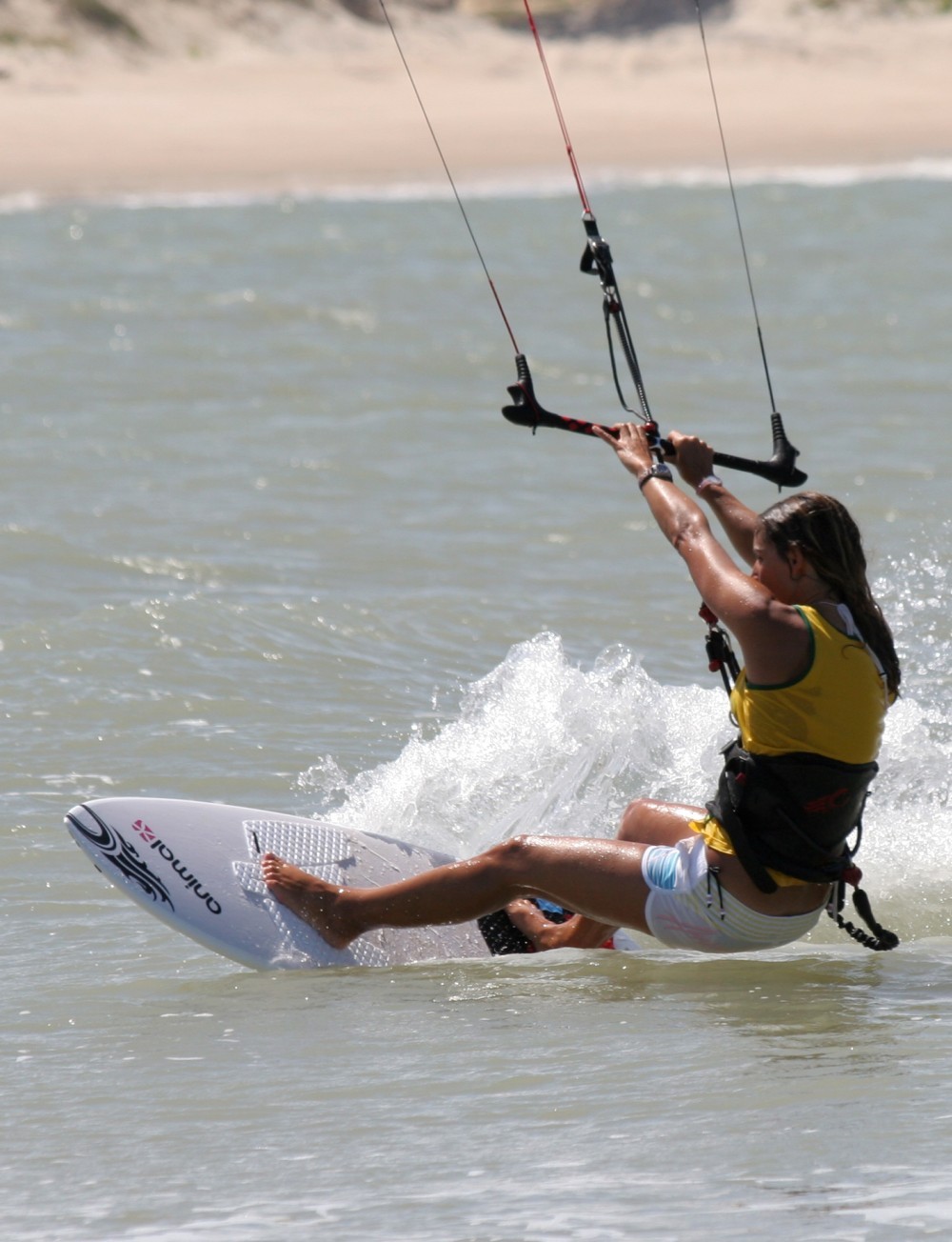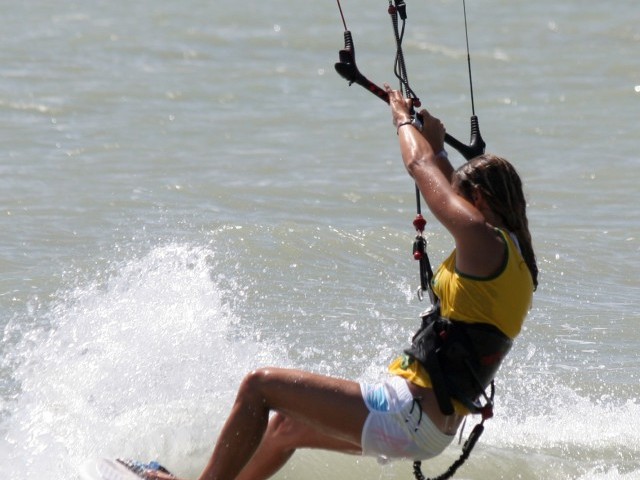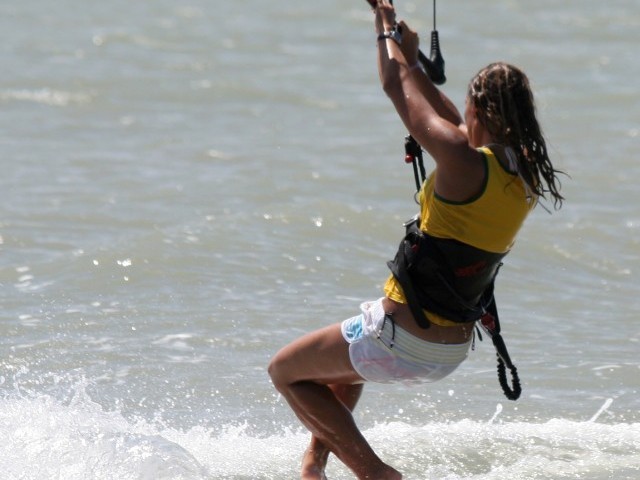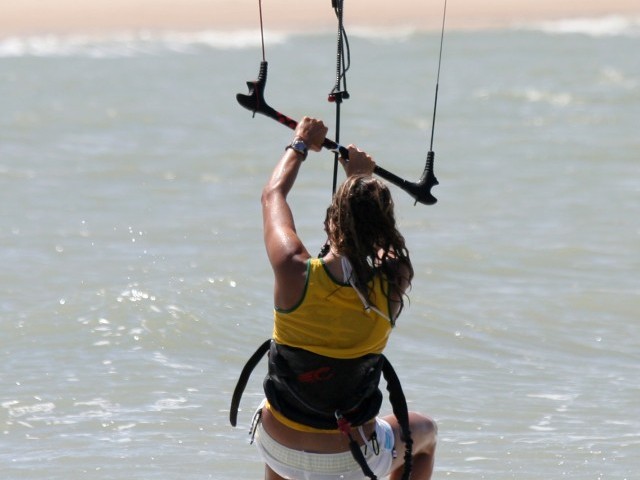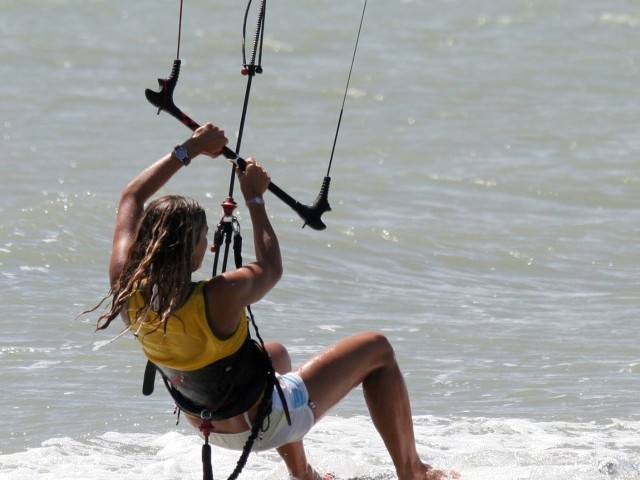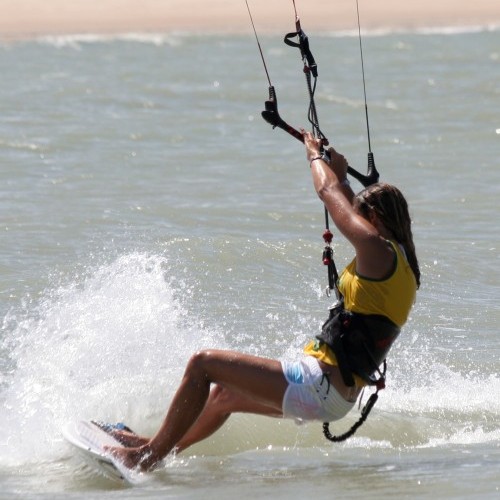
Surfboard Tack
Technique / Intermediate
Introduction
There are a couple of ways to tack a surfboard, so here’s one which hopefully is the least complicated and which should take less time to learn. Tacking any sort of directional board is a useful skill, as turning around quickly without loosing any ground downwind certainly saves time and effort, especially when all you are trying to do is get upwind! For starters the simplest way to learn this will be strapless, less to trip over and far more forgiving. Once you’ve got it mastered you can then fiddle around dodging your stirrups in preparation for those silly conditions or dare we say it your race board.
Realistically tacking a surfboard should be approached as a new skill, and as long as you are happy riding around on one you are ready to have a go. If you fancy yourself as a bit of a twinkle toed salsa king, or have Latin blood you will probably find this easier than the Tango, but a lack of rhythm can be substituted with a hefty dose of go for it. After all it is a simple Waltz, 1-2-3. What invariably makes this tricky is the multitasking element of concentrating on both the board/your feet and the kite/your hands, so we’ll ponder each part of the tack individually so you can work on them independently and in your own time.
As Good a Place as Any
In Sequence 1. you can see the crux moment of a tack, which happens fairly quickly from the moment you will turn the board upwind to the moment you push it off the wind and ride away in the other direction. Essentially your task is to turn the board enough through the wind so that when you turn your head and body to face the new direction, the board is ready and waiting pointing in the correct direction. In the infamous words of Mr Mike Smith “simple as that.” In an effort to understand what needs to happen, and why lets study a few pictures of Karine enjoying life on her Skillit 5’0 in warmer climes, from the beginning onwards.
The Approach - Pic A
Without a shadow of a doubt the tack is easier to learn if you have a bit of power in the kite and therefore the board is moving with a bit of speed. You will need to be able to move around/over the board and be balanced so your stance is important. You can see that Karine has her feet spread, one on the tail pad and one way up where the front strap would be. Shortly she will need both her feet to manoeuvre the board and if they are not in the ready position here she won’t be able to shove the board about. If Karine had her feet too close together she would also risk being upright and therefore easily knocked off balance. That said if your feet are uncomfortably far apart you will be stuck in a “splits” position, and any chance of being dynamic will be out the window. Ideally you should be mobile, able to move your hips both forwards towards the nose, and back towards the tail. Try sailing around with different degrees of seperation between your feet until you find something that is comfortable but relatively wide – the perfect happy medium.
The Carve - Pic B
Now that you’ve found your sea legs you need to get the board and kite in position so you can start dancing. You need to carve the board hard into wind by getting your body low and edging hard. Your wide stance should engage a lot of the board’s rail which will help you turn up into wind without just stamping on the tail and killing all your speed. As usual as you carve your back leg will be quite flexed, which will come in handy any second now. At the same time you need to lift the kite towards 12 o’clock as if you were about to do a slide turn, so steer it up with your back hand.
There will however be a point where the kite won’t allow you to turn any further into wind, so to counteract this you must let the bar pull away from you, thus reducing the tension on the lines and allowing you to turn right up into the wind under your kite. You can see how although Karine is steering the kite up she has extended her arms to prevent being pulled by her kite.
The Push - Pic C
Even with the kite sheeted out there is only so far you can turn the board into the wind before it stops. As we briefly mentioned at the beginning, you need the board to be pointing the other way so you can turn yourself and ride away. Here you can see that Karine has extended her back leg, pushing the back of the board away from her. To do this she has moved her hips forward so that her weight is over her front foot. This means that she can keep her body balanced over her front leg and really push the back of the board away from her so that it practically slides. The result is that the board will turn even further, and if you’ve done it right the nose will actually go through the wind and the board will be biased to the new direction. Pretty good.
The Pull Step - Pic D
This is the nimble bit but without your Cuban heels. As you feel the back of the board going away from you its time to pull the front of the board underneath you with your front foot. Karine is scissoring her feet, pushing the back leg and pulling the front leg under her. This is the moment you may need some support from the kite, so as long as it is above you pulling gently on the bar will hold your weight whilst you tip toe over the board. Your target here is to pull your front foot under your bum and then move your back foot from the tail of the board and stomp it down next to your front foot. As Karine brings her back foot up she starts to turn her head, shoulders and hips to face downwind so that she can line herself up with the board.
Think Tail Pad - Pic E
As Karine turns her body she also needs to get some power in the kite to support her and get the board moving again, as there is not enough volume to keep her supported. So as you can see she starts to steer the kite down. The only problem with this is that at the moment she is not ready to sail away as all her weight is on her new front foot. As the kite moves across towards the other side of the window it will try and pull Karine over the front of the board, and it will do the same to you. To combat this, really focus on the tail of your board. Fortunately this year our tail pads are colourful so its easy to see them and concentrate all your efforts on getting your back foot on that tail. By doing this Karine is throwing her weight back against the pull of the kite.
Fin Time - Pic F
Now all that is left is to get the board moving forwards, and luckily any directional board has this need in its DNA. You just need to get some pressure near the fins and its bingo. Assuming that you got your new back foot onto the tail pad this should be fairly automatic. Karine has got both her feet onto the upwind side of the board, so as her weight goes through the tail her board will start to move forwards. To make this easier, with her weight on the upwind side Karine can push with her front foot and the nose will slide away from her and off the wind.
Top Tips
As with a lot of surfboard technique this will be a lot easier if you practice in the flat, whether it is between waves or somewhere sheltered. The problem at first with chop is that the board slows quickly and it is hard to get the scissor action going.
Its also a good plan to run through the movement on land first. You don’t have to trample on you board, just make a pointy shape in the sand (board like) facing into wind and stand so that one shoulder and ear is getting the weather. Ready for the blue Danube, with your feet spread bring the back foot up (that’s 1), turn you head and shoulders so that you look down the length of the board and stp back to the tail with your new back foot (that’s 2), and finally move your hips back towards the tail so that your new front foot slides to face forwards (that’s 3).
Finally to get a good feel for the scissoring action you can have a few blasts on your twin tip and try some extreme into wind slide turns. No the same but it will help you move your weight forward.
Following Sequence 2 and Sequence 3
- Pic 1. Karine approaches with a wide stance, good speed and kite around 11 o’clock.
- Pic 2. Karine gently steers the kite up and turns her head into wind to initiate her carve.
- Pic 3. Karine carves into wind on her edge and at the same time pushes the bar away from her so that she will turn as far as possible.
- Pic 4. As the board starts to slow down Karine moves her weight forward and pushes her back foot away from her, extending her back leg completely.
- Pic 5. Karine pulls the bar in and starts to steer the kite down as she brings her back foot up to her front foot, turning her shoulders to face downwind.
- Pic 6. Karine concentrates on the tail pad, and gets her back foot on it whilst continuing to dive the kite to get moving again.
- Pic 7. With her feet on the upwind side of the board Karine moves her hips back towards the tail of the board.
- Pic 8. With the fins biting Karine pushes the nose of her board off the wind by extending her front leg.
Common Problems
Not getting the board to turn enough before you move your feet and turn is the classic problem here. You need the speed to carve far enough, and you need the slack in the back lines to make it that last smidgen. Added to that its easy to wait too long to make sure you have turned, so you need to be dynamic and go for it. One tip that can really help once you’ve pushed the board away from you is if you try to pull the board underneath you with your front foot, gripping it with your toes as you turn, like a bull scraping the ground.
As we mentioned getting pulled over the front as you turn is also very common. So focus on that tail pad, paint it fluro pink and get your foot back there and your hips too. A grippy surface really helps so make sure you’ve got enough wax.
Keystones
- Wide Feet
- Carve hard
- Bar out
- Scissor
- Tail Pad
This technique article was in Issue 24 of IKSURFMAG.
Related
By Christian and Karine
Christian and Karine have been working together as a coaching team, running improver to advanced kitesurfing clinics since 2003.






